
A spreadsheet of a collection of 3 act tasks by standard.
- Subject:
- Professional Learning
- Material Type:
- Diagram/Illustration
- Provider:
- Dan Meyer
- Date Added:
- 06/08/2023

A spreadsheet of a collection of 3 act tasks by standard.

Students must convert yards to feet to solve this word problem.
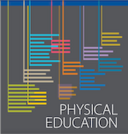
This assessment is a resource for teachers to test their students dance fitness abilities and provide helpful feedback.

Movement helps us internalize steady beat! You can't NOT bust a move in this Groovy Dance party featuring hits from the 1950s and 1960s. Great for all ages!

Music is a great tool to help control movement and help develop self-regulation skills. Get your wiggles out with music from different periods of time and all over the world. Great for all ages.

Children will move around in a designated area as they move like the animals in the story.

This nonfiction article, written for students in grades 4-5, explores the life and seasonal migration of the sanderling bird. Modified versions are available for students in younger grades.

This informational text introduce students to the life cycle and migration of the sanderling, a bird that winters on beaches in the Southern United States and South America but breeds in the Arctic during the summer months. The text is written at a grade four through grade five reading level. This is a PDF containing the informational text and a glossary.

Children will listen to music and move their bodies to express the feelings of the music piece(s) presented.

Students learn about personification by reading and discussing poems and then brainstorm nouns and verbs to create personification in their own poems.

Learn about the properties of solid, liquid, and gas while dancing with the famous music group, The Gregory Brothers!
To help understand how water changes states of matter, Scientist Sam brings in the musical group The Gregory Brothers to help teach about the states of matter through an interactive dance. The viewer dances like a solid, liquid and gas and learns that water can change states of matter when temperatures are below 0 degrees Celsius or above 100 degrees Celsius.
Learning Objective:
Classify matter by physical properties, including shape, relative mass, relative temperature, texture, flexibility, and whether material is a solid or liquid.

Watch the clip, Bomba or Baseball, from Alma's Way to spark conversations about dancing and not getting things right on the first try. Then, introduce the activity to help students practice developing their coordination skills and work to strengthen their large muscles.
NOTE: The PDF document assets and Support Materials are also available in Spanish.

Taraxacum officinale, commonly referred to as the dandelion, is a plant native to Eurasia that can now be found worldwide[1]. This plant is easily identifiable by its bright yellow flowers (Figure 1) and its distinctive “puffball” seed head (Figure 2). Each seed from this head is attached to a parachute-like structure, known as a 'pappus', which facilitates wind dispersal[2]
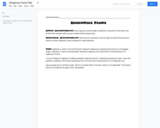
Students will work to solve a problem involving a 30-60-90 right triangle and a constant rate of change to discover how long it will take for dangerous fumes from a car crash to each others on the road.

Students will learn vocabulary words associated with alcohol and the effects it has on the human body.

Students will learn the vocabulary words associated with tobacco and the negative effects tobacco has on the human body.

Students will increase their knowledge of Internet safety. Students will explore and identify dangers on the Internet and learn ways to avoid situations that might be threatening or harmful.
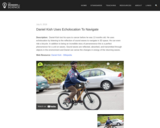
Science Phenomena: HS Physical Science - Waves and Information - Daniel Kish lost his eyes to cancer before he was 13 months old. He uses echolocation by listening to the reflection of sound waves to navigate in 3D space. He can even ride a bicycle. In addition to being an incredible story of perseverance this is a perfect phenomenon for a unit on waves. Sound waves are reflected, absorbed, and transmitted through objects in the environment and Daniel can sense the changes in energy of the returning waves.
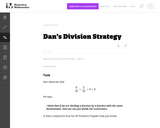
The purpose of this task is to help students explore the meaning of fraction division and to connect it to what they know about whole-number division.
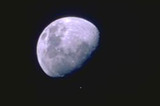
This resource is a Science student activity that utilizes Utah's Online Library resources - specifically, Gale's Research in Context 6-8 to help students learn about the moon.